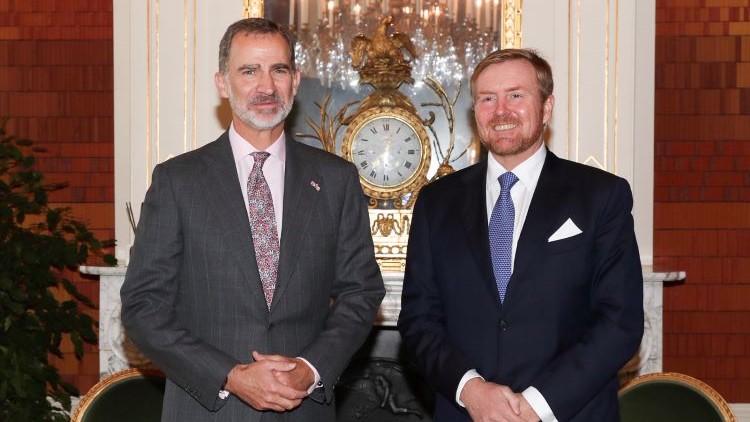The Diplomat
The King of the Netherlands, William-Alexander, will pay a working visit to Spain this week on the occasion of the 375th anniversary of the establishment of diplomatic relations and to “strengthen the position of the two countries as pioneering partners in the green transition,” according to the Royal House.
William-Alexander will visit Spain from tomorrow until Wednesday, in his second visit to our country since he came to the throne. King Willem-Alexander and his wife, Queen Máxima Zorreguieta, visited Spain for the first time in September 2013, in an official presentation trip made five months after his coronation (at that time, Spain was still reigned by the current King Emeritus, Juan Carlos I).
A year later, in October 2014 (four months after his accession to the Throne), Felipe VI and Queen Letizia visited the Netherlands, where they were received by the Dutch King and Queen at the Noordeinden Palace. The King and Queen of Spain returned to the Netherlands in 2017 on the occasion of the celebration of the 50th anniversary of the birth of William-Alexander. Likewise, Felipe VI paid a brief visit to the Netherlands in October 2019 to inaugurate, together with William-Alexander, the exhibition Rembrandt-Velázquez: Dutch and Spanish masters, at the Rijksmuseum in Amsterdam.
During the first day, the two Kings will attend tomorrow, at the Royal Botanical Garden of Madrid, a lunch offered on the occasion of the celebration of the 375th anniversary of the establishment of diplomatic relations between the Kingdoms of the Netherlands and Spain. The following day, the two Monarchs will travel to Algeciras, in the province of Cadiz, where they will preside over the institutional act of presentation of the first green hydrogen maritime corridor between the ports of Algeciras and Rotterdam.
“The development of these green hydrogen corridors can make an important contribution to the European Union’s energy supply security and an excellent alliance between southern and northern Europe,” the Royal House emphasized. “To this end, both countries have agreed to establish strategic partnerships to develop the infrastructures of the green hydrogen export maritime corridors,” it continued. “Collaborations will also be established in R&D, manufacturing and strategic autonomy vis-à-vis third countries for the supply of electrolyzers, solar panels and fuel cells, among other partnerships,” it added.
According to the Dutch Royal House, “the visit will focus on hydrogen as an important energy vector in the energy system of the future.” “Spain will be an important supplier of green hydrogen in Europe,” it stressed. “Hydrogen can be exported to northwest Europe through Spanish and Dutch ports,” and import and export corridors within Europe “contribute to greater security of supply,” it added.
Cepsa and Dutch company ACE Terminal signed a memorandum of understanding last February whereby the Spanish energy company will supply green ammonia to the planned import terminal at the Port of Rotterdam, both for final use in industry after conversion of the ammonia back into green hydrogen and for direct use as a renewable fuel for the maritime sector and other industries in northwest Europe.
Rotterdam is the most important energy port in Europe, handling 13% of European energy demand, while the Port of Algeciras is the first in Spain, the fourth in Europe and an important trade route between Europe and Asia. Future demand for green hydrogen in northwest Europe exceeds the capacity that can be produced locally from sustainable sources, hence the need to import green hydrogen on a large scale.







